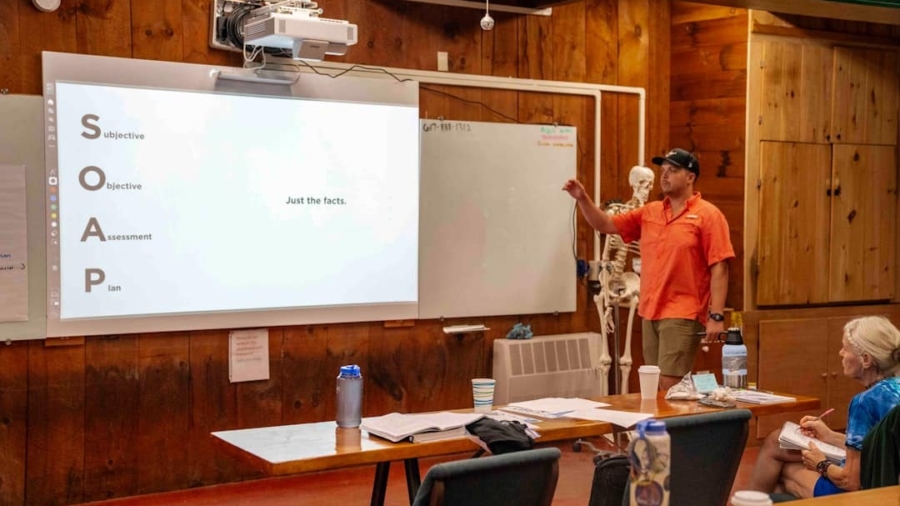The landscape of teacher training has undergone a significant transformation in recent years, largely driven by the advent of digital platforms. These platforms have emerged as vital tools for educators, providing access to a wealth of resources, training modules, and collaborative opportunities that were previously unavailable or difficult to access. The shift towards digital training is not merely a response to technological advancements; it reflects a broader understanding of the need for flexible, scalable, and effective professional development in education.
As the demands on teachers evolve, so too must the methods by which they are trained and supported. Digital platforms encompass a wide range of tools and resources, including online courses, webinars, virtual communities, and interactive simulations. They allow educators to engage in continuous learning, regardless of their geographical location or time constraints.
This democratization of access to quality training resources is particularly important in a globalized world where educational standards and practices can vary significantly.
Key Takeaways
- Digital platforms offer convenience and flexibility for teacher training, allowing educators to access resources and collaborate with peers from anywhere.
- Advantages of using digital platforms for teacher training include cost-effectiveness, scalability, and the ability to provide personalized learning experiences.
- Challenges and limitations of digital platforms in teacher training include the need for reliable internet access, digital literacy skills, and concerns about data privacy and security.
- Artificial intelligence plays a role in teacher training by providing personalized feedback, automating administrative tasks, and analyzing data to improve teaching practices.
- Personalized learning and professional development through digital platforms allow educators to tailor their learning experiences to their individual needs and interests.
- The integration of virtual reality and augmented reality in teacher training provides immersive and interactive learning experiences for educators.
- Digital platforms impact pedagogy and classroom practices by promoting student-centered learning, collaboration, and the use of multimedia resources.
- Future trends and innovations in digital teacher training platforms may include the use of adaptive learning technologies, gamification, and virtual coaching for educators.
Advantages of Using Digital Platforms for Teacher Training
One of the most significant advantages of digital platforms in teacher training is the flexibility they offer. Educators can engage with training materials at their own pace and on their own schedule, which is particularly beneficial for those balancing teaching responsibilities with professional development. This asynchronous learning model allows teachers to revisit complex topics, engage with supplementary materials, and reflect on their learning without the pressure of a traditional classroom setting.
For instance, platforms like Coursera and edX provide courses from renowned universities that teachers can access anytime, enabling them to tailor their learning experiences to fit their individual needs. Moreover, digital platforms facilitate collaboration and networking among educators. Online forums, discussion boards, and social media groups allow teachers to connect with peers from around the world, share best practices, and discuss challenges they face in their classrooms.
This sense of community can be invaluable for professional growth, as it encourages the exchange of ideas and fosters a culture of continuous improvement. For example, platforms like Edmodo and Google Classroom not only serve as tools for classroom management but also create spaces for educators to collaborate on lesson planning and share resources, enhancing their teaching practices collectively.
Challenges and Limitations of Digital Platforms in Teacher Training

Despite the numerous advantages that digital platforms offer for teacher training, there are also significant challenges and limitations that must be addressed. One major concern is the digital divide; not all educators have equal access to technology or reliable internet connections. This disparity can create inequities in professional development opportunities, particularly in rural or underserved areas where resources may be limited.
As a result, some teachers may find themselves at a disadvantage compared to their peers who have better access to digital tools and training programs. Additionally, the effectiveness of digital training programs can vary widely. While some platforms provide high-quality content and engaging learning experiences, others may lack rigor or fail to meet the specific needs of educators.
The abundance of available resources can also lead to information overload, making it challenging for teachers to discern which programs are most relevant and beneficial for their professional growth. Furthermore, without proper guidance or support from educational institutions, teachers may struggle to navigate these platforms effectively, limiting the potential impact of digital training on their practice.
The Role of Artificial Intelligence in Teacher Training
Artificial intelligence (AI) is increasingly playing a pivotal role in enhancing teacher training through digital platforms. AI-driven tools can analyze vast amounts of data to provide personalized learning experiences tailored to individual educators’ needs. For instance, adaptive learning technologies can assess a teacher’s strengths and weaknesses based on their interactions with training materials and adjust the content accordingly.
This level of customization ensures that educators receive targeted support that aligns with their specific professional development goals. Moreover, AI can facilitate the creation of intelligent tutoring systems that offer real-time feedback and guidance during training sessions. These systems can simulate classroom scenarios, allowing teachers to practice their skills in a safe environment while receiving instant feedback on their performance.
For example, platforms like Mursion use AI-driven avatars to create realistic classroom interactions where teachers can refine their instructional techniques and classroom management strategies. By integrating AI into teacher training, digital platforms can enhance the overall effectiveness of professional development initiatives.
Personalized Learning and Professional Development through Digital Platforms
Personalized learning has become a cornerstone of effective teacher training on digital platforms. By leveraging data analytics and user feedback, these platforms can create customized learning paths that cater to individual educators’ needs and preferences.
For instance, a teacher working in a bilingual classroom may benefit from targeted training on language acquisition strategies, while another educator may focus on integrating technology into their lessons. Furthermore, personalized professional development fosters a sense of ownership among educators regarding their learning journeys. When teachers have the autonomy to choose their training topics and pace, they are more likely to remain motivated and committed to their professional growth.
Digital platforms often incorporate features such as goal-setting tools and progress tracking, allowing educators to monitor their development over time. This self-directed approach empowers teachers to take charge of their learning while aligning it with their career aspirations and classroom needs.
The Integration of Virtual Reality and Augmented Reality in Teacher Training

The integration of virtual reality (VR) and augmented reality (AR) into teacher training represents a groundbreaking advancement in how educators can develop their skills. These immersive technologies provide unique opportunities for experiential learning that traditional methods cannot replicate. For example, VR simulations can transport teachers into diverse classroom environments where they can practice instructional strategies or classroom management techniques without the risks associated with real-life scenarios.
This hands-on experience allows educators to experiment with different approaches and receive feedback in a controlled setting. AR technology further enhances teacher training by overlaying digital information onto the real world. Educators can use AR applications to visualize complex concepts or access additional resources while engaging with students in the classroom.
For instance, an AR app might allow teachers to project interactive 3D models during science lessons, making abstract concepts more tangible for students. By incorporating VR and AR into teacher training programs, digital platforms can create dynamic learning experiences that prepare educators for the challenges they will face in modern classrooms.
The Impact of Digital Platforms on Pedagogy and Classroom Practices
The rise of digital platforms for teacher training has had a profound impact on pedagogy and classroom practices. As educators engage with innovative teaching strategies through online courses and collaborative networks, they are more likely to adopt new methodologies that enhance student engagement and learning outcomes. For instance, many digital training programs emphasize student-centered approaches such as project-based learning or inquiry-based instruction, encouraging teachers to move away from traditional lecture-based models.
Additionally, the integration of technology into teacher training has prompted educators to rethink how they utilize digital tools in their classrooms. Teachers who have experienced effective online learning environments are often inspired to incorporate similar strategies into their teaching practices. This might include using multimedia resources to create interactive lessons or leveraging online assessment tools to gather real-time feedback from students.
As a result, digital platforms not only enhance teachers’ professional development but also contribute to a broader shift towards more innovative and effective pedagogical practices.
Future Trends and Innovations in Digital Teacher Training Platforms
Looking ahead, several trends and innovations are poised to shape the future of digital teacher training platforms. One notable trend is the increasing emphasis on micro-credentialing and competency-based assessments. As educators seek recognition for their skills and achievements, digital platforms are beginning to offer micro-credentials that validate specific competencies or areas of expertise.
This approach allows teachers to showcase their professional growth in a more granular way while providing employers with clear indicators of an educator’s capabilities. Another emerging trend is the integration of social-emotional learning (SEL) into teacher training programs. Recognizing the importance of supporting educators’ well-being alongside their professional development, many digital platforms are beginning to incorporate SEL frameworks into their curricula.
This focus on emotional intelligence equips teachers with the skills needed to foster positive classroom environments and support students’ social-emotional growth. As technology continues to evolve, we can expect further innovations in areas such as gamification, data analytics, and collaborative learning environments within digital teacher training platforms. These advancements will not only enhance the quality of professional development but also ensure that educators are well-prepared to meet the challenges of an ever-changing educational landscape.
In exploring the evolution of education, particularly in the realm of teacher training through digital platforms, it’s essential to consider the technological tools that facilitate this transformation. An article that complements this discussion is Unlock Your Creative Potential with the Samsung Galaxy Book Flex2 Alpha. This piece highlights the capabilities of modern technology, such as the Samsung Galaxy Book Flex2 Alpha, which can be instrumental for educators in accessing and delivering digital training programs. The integration of advanced devices in educational settings not only enhances the learning experience but also empowers teachers to adapt to new teaching methodologies effectively.
FAQs
What is the future of teacher training?
The future of teacher training is moving towards digital platforms, which offer more flexibility, accessibility, and personalized learning experiences for educators.
How are digital platforms changing teacher training?
Digital platforms are changing teacher training by providing on-demand access to resources, interactive learning modules, virtual classrooms, and opportunities for collaboration and networking with other educators.
What are the benefits of using digital platforms for teacher training?
Some benefits of using digital platforms for teacher training include cost-effectiveness, scalability, the ability to reach a wider audience, personalized learning experiences, and the integration of multimedia and interactive content.
What are some examples of digital platforms for teacher training?
Examples of digital platforms for teacher training include online learning management systems, virtual reality simulations, video conferencing tools, and social learning platforms designed specifically for educators.
How can digital platforms improve the quality of teacher training?
Digital platforms can improve the quality of teacher training by offering more engaging and interactive learning experiences, providing access to the latest research and best practices, and enabling ongoing professional development and support for educators.

